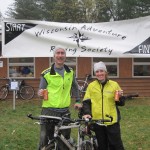Have you resolved to “get in shape”?
Did you know that 88% of New Years Resolutions fail?
Sticking with it for the first 3 months is the key to success. If you are finding it difficult to stick to your resolutions, you’re not alone!
How can you improve your odds? Start by setting a SMART goal.
SMART = Specific, Measureable, Attainable, Reward-based, and Time-framed.
SPECIFIC
Most resolutions fail because they are too vague.
Proclaiming: “I am going to get in shape this year” is not specific enough.
You need to have an ACTION PLAN: “I am going to exercise for 30 minutes three times per week for the next 4 weeks.”
MEASURABLE
Avoid setting a goal to lose a specific amount of weight in a specific amount of time as your one and only goal*. Most people feel they MUST weigh themselves, however don’t base everything on what the scale says.
- Keep track of inches lost with a tape measure.
- Measuring too complicated? Instead pay attention to how your clothes fit. Take note of how a particular pair of pants fits (maybe a little snug) and try it again in a month.
- Find out your body composition (the ratio of fat to lean body tissue) is much more important. This can be measured with a skin-fold calipers or Futrex Body Composition Analyzer…you can schedule an appointment at our studio.
- Test your fitness level. How many push-ups you can do without stopping? How many chair squats you can complete in 30 seconds? How long does it takes you to walk/run one mile? Re-test every eight to twelve weeks and you will be impressed with yourself!
ATTAINABLE
Steer clear of false expectations. Do not expect to lose more than one pound per week*. You did not get out-of-shape overnight and it may take some time to see the results. Weigh yourself only once each week and for most re-assessments wait at least one month.
REWARD-BASED & TIME FRAMED
It’s important to dangle a carrot out there for motivation. Setting a time frame will help you know WHEN it is time to reward yourself. Think of something you’ve been wanting to do. When you reach your 4 week, 8 week or 12 week goal do something nice for YOU!
Stick with it through March 31, 2012 (there’s your time-frame!) Once you pass that three month milestone, experience the benefits of regular exercise and see some results you will look good & feel great!
*Keep in mind that studies show exercise alone WILL NOT help you lose a significant amount of weight. Sign up for Smart Loss Seminar to find out what to eat, when to eat, and how much to eat.
Do you have a health and fitness question? Email us at info@xofitness.com
Karin Jennings is a certified personal trainer and co-owner of XO Fitness, LLC in De Pere.












